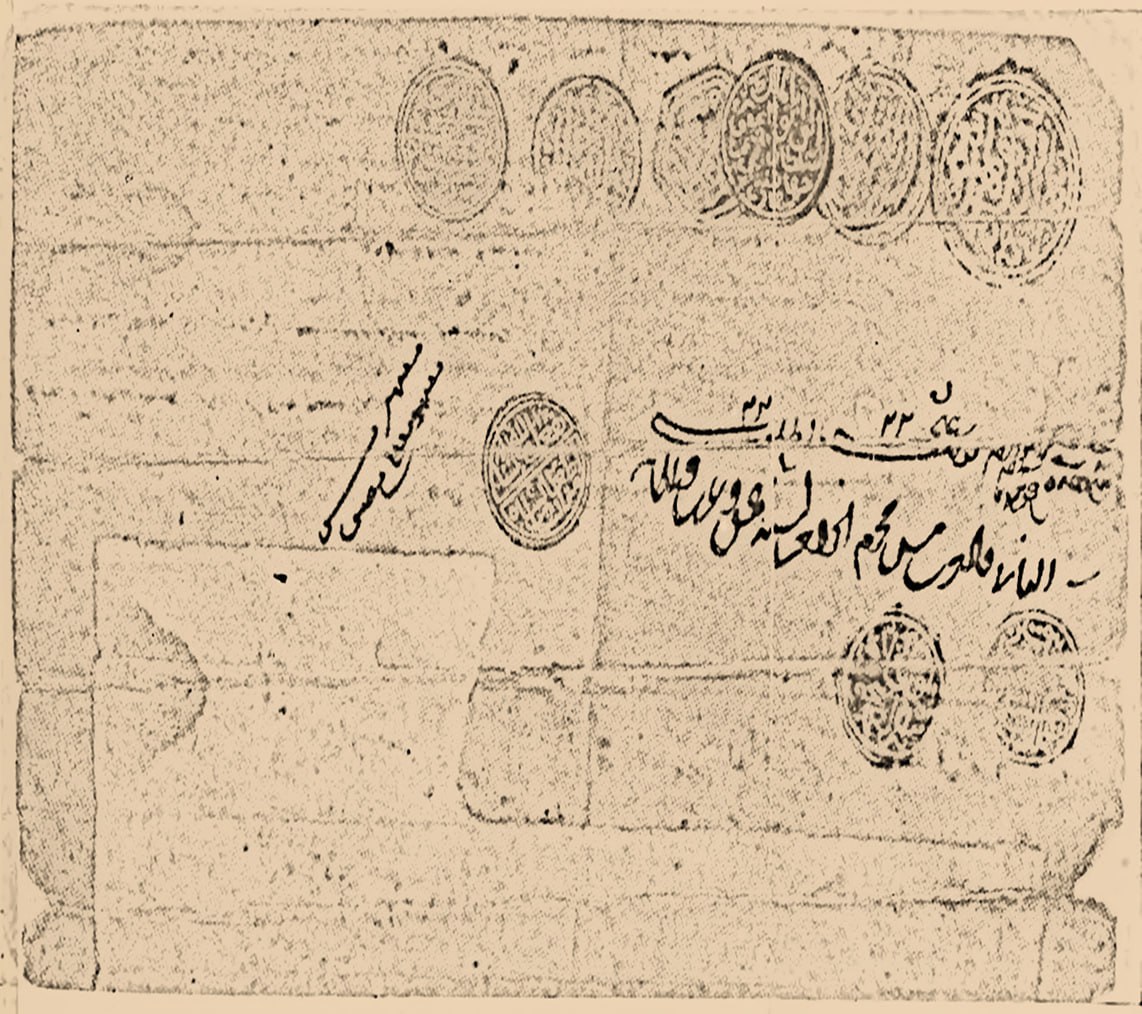Shahrukh Mirza’s 1422 emblem – a rare document in the heritage of the Center of Islamic Civilization

Among the rare written sources to be displayed in the exhibition of the Center of Islamic Civilization in Uzbekistan, the 1422 decree of Shahrukh Mirza holds particular significance. Written in classical Uzbek, this document has historical value as one of the finest examples of medieval diplomatic and legal written culture.
The certificate was first obtained in the summer of 1947 during the scholarly trip of the famous orientalist E. Benveniste to Kabul. It is reported that the document was given to the scholar after being found in a jar during the demolition of an old house in the city of Maymana. The decree consists of 13 lines, begins with the phrase “Šahruh bahadur sözüm”, and is authenticated with two circular seals. The text of the first seal, in Arabic script, reads: “al-wathiq bi-llah al-ghafur Šahruh bahadur” (“Shahrukh Bahadur, confirmed in the name of the Forgiving Allah”).
The second seal bears the inscription “nišani Šahruh bahadur nišani” (“Seal of Shahrukh Bahadur”). The text is written from right to left, with certain lines starting according to an internal order. On the reverse side of the document, a combination of Turkic-Uyghur and Arabic scripts records the date as the twenty-second day of the month of Muharram, year 828 AH, which corresponds to January 16, 1422 in the Gregorian calendar.
The reverse also bears the seals of nine different officials, indicating that they reviewed the document and reaffirmed its authenticity. Among these seals, the marks of historical figures such as Shahrukh’s son Baysunghur Mirza Bahadur, Muzaffar al-Din Jahan Shah of the Qara Qoyunlu rulers, Sotiq Shah Firuz, and Miran Shah Tughan Shah stand out. Some seals are extremely faint or overlapped, making them difficult to read.
Particularly noteworthy is the seal of Muzaffar al-Din Jahan Shah it is clearer and more distinct than the others, and indicates that it was affixed during the period when Khorasan was conquered. This suggests that the document was not validated only once, but underwent repeated official confirmations during various political periods.
 This decree not only reflects Shahrukh Mirza’s statecraft or the culture of practical document management, but also provides valuable information on the combined use of Turkic and Arabic scripts in the medieval period, the art of seal-making, the style of diplomatic language, and the traditions of recording historical events.
This decree not only reflects Shahrukh Mirza’s statecraft or the culture of practical document management, but also provides valuable information on the combined use of Turkic and Arabic scripts in the medieval period, the art of seal-making, the style of diplomatic language, and the traditions of recording historical events.
The document vividly illustrates not only Shahrukh Mirza’s role in governance and legal relations, but also the medieval style of official documentation, as well as the culture of writing and seals. For this reason, it holds a special place in the “Civilizations before Islam” section of the Center of Islamic Civilization in Uzbekistan.
Durdona Rasulova
P/S: The article may be used provided that a link to the Center’s official website is included
Most read

Over 100 experts from more than 20 countries of the world are in Tashkent!

The Center for Islamic Civilization – a global platform leading towards enlightenment

The museum of the Center for Islamic Civilization in Uzbekistan has been further enriched: unique artifacts from different parts of the world have been presented as gifts











